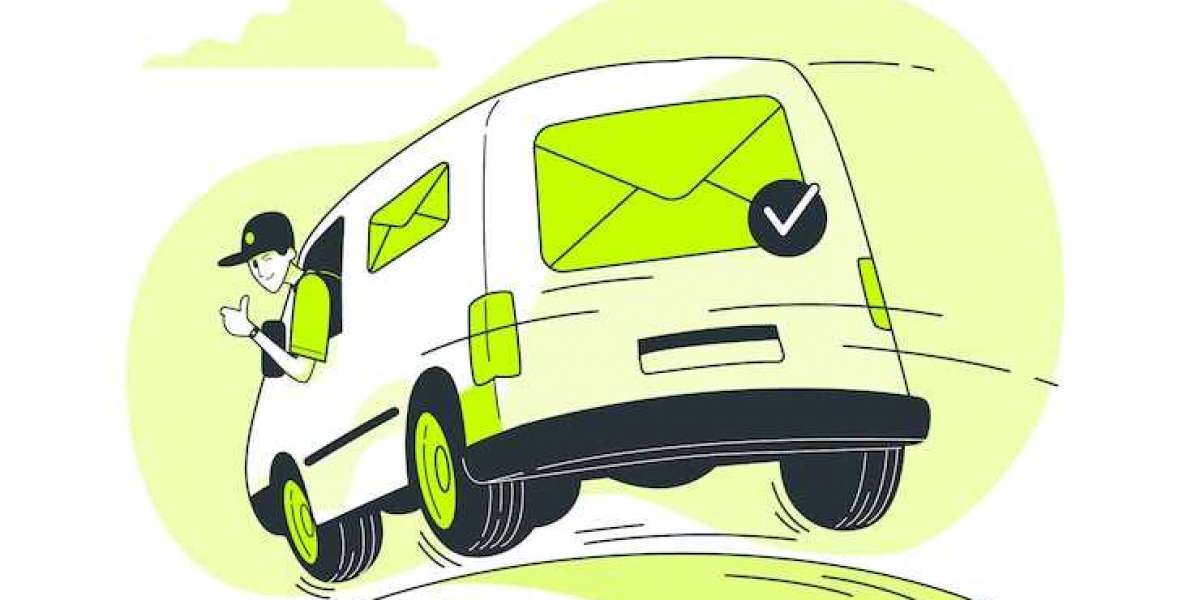The gig economy has seen tremendous growth in recent years, and with it, the demand for delivery services has skyrocketed. Amazon Flex is one of the leading players in the last-mile delivery sector, allowing drivers to deliver packages using their vehicles. For entrepreneurs looking to capitalize on this growing trend, building an Amazon Flex clone can be a profitable venture. In this blog, we will provide a step-by-step guide to help you create your own successful Amazon Flex clone.
Understand the Amazon Flex Business Model
Before embarking on the development of your own Amazon Flex clone, it is crucial to fully understand the business model behind Amazon Flex. Amazon Flex allows drivers to work as independent contractors, delivering packages to customers using their personal vehicles. Drivers select delivery blocks, which are set time slots during which they are expected to deliver packages. The key revenue drivers for such platforms are delivery fees and the scalability of the workforce. By understanding these core elements, you can better tailor your app to meet the needs of both drivers and customers.
Define Your Target Audience
The next step in building your Amazon Flex clone is to clearly define your target audience. This includes both the drivers who will be using the platform and the customers who will be receiving deliveries. For the driver-side, you’ll need to understand their preferences, such as the ability to choose delivery blocks, earn flexible income, and have easy access to available delivery opportunities. For customers, you must ensure that the app provides a seamless, reliable, and efficient delivery experience. Tailoring the app to meet the needs of these audiences will be key to the platform’s success.
Plan Essential Features for Your Clone App
To create a successful Amazon Flex clone, it is essential to include features that cater to both the driver and customer side of the business. Here are the main features you should consider:
Driver Features:
- Driver Registration and Profile Setup: Allow drivers to sign up using their email or social media profiles and complete a profile with necessary details such as vehicle type, driving history, etc.
- Available Delivery Blocks: Provide drivers with the option to view and select available delivery blocks based on their location and preferred time slots.
- Real-Time GPS Navigation: Integrate GPS navigation for drivers to efficiently locate delivery destinations.
- Earnings Tracker: Include a feature that lets drivers track their earnings from each delivery, along with tips and bonuses.
- In-App Messaging: Allow communication between drivers and the platform or customers for any queries or issues.
Customer Features:
- Customer Registration and Profile Setup: Let customers create an account and manage their personal information.
- Real-Time Package Tracking: Offer the ability for customers to track their packages in real-time.
- Estimated Delivery Time: Include an estimated time for when the package will arrive, so customers are prepared for the delivery.
- Payment Gateway Integration: Provide easy payment options such as credit cards, debit cards, and e-wallets for a seamless transaction.
- Ratings and Reviews: Let customers rate their experience and provide feedback on the delivery service.
Choose the Right Tech Stack
The tech stack you choose will play a significant role in the performance and scalability of your Amazon Flex clone. Consider the following when choosing your technology stack:
- Frontend Development: Use frameworks like React Native or Flutter to build a cross-platform app that works well on both iOS and Android.
- Backend Development: For a robust backend, consider Node.js, Ruby on Rails, or Django. Choose a backend solution that can handle high volumes of data and user traffic.
- Database: Use a scalable database like PostgreSQL or MongoDB to manage user data, package details, and driver information.
- Payment Integration: Integrate popular payment gateways like Stripe or PayPal to handle transactions securely.
- GPS Integration: Use Google Maps or Mapbox for accurate and real-time navigation for drivers and package tracking for customers.
- Push Notifications: Integrate push notification services like Firebase Cloud Messaging to keep drivers and customers updated on important events (e.g., new delivery blocks, package status updates).
Develop a User-Friendly Interface
A clean, easy-to-use interface is crucial for the success of your Amazon Flex clone. Both drivers and customers need to have a hassle-free experience using the app. Focus on intuitive design, with clear navigation paths, easy-to-understand instructions, and fast loading times. Simple color schemes and consistent branding can help create a professional and appealing look. Prioritize functionality by including the most important features prominently, such as easy access to delivery blocks for drivers and tracking features for customers.
Implement a Driver Verification Process
To ensure the safety and reliability of your platform, it is important to implement a thorough driver verification process. This can include background checks, vehicle inspections, and driving history verification. The verification process ensures that only qualified and trustworthy drivers can deliver packages, enhancing customer trust and reducing the risk of accidents or issues during deliveries. Additionally, a robust verification process helps you comply with local regulations regarding gig work and transportation.
Launch a Minimum Viable Product (MVP)
Once you have developed the essential features and the user interface, the next step is to launch a Minimum Viable Product (MVP). An MVP is a version of the app that includes the core features necessary to meet the basic needs of users. By releasing an MVP, you can test your app with real users, gather feedback, and make improvements before a full-scale launch. The MVP stage is essential for validating your business idea and ensuring that your app works effectively before investing more time and resources into its development.
Market Your Amazon Flex Clone
After successfully building and testing your Amazon Flex clone, it's time to market the app. Effective marketing strategies include:
- Social Media Marketing: Use platforms like Facebook, Instagram, and Twitter to build awareness and engage with potential users.
- Influencer Partnerships: Collaborate with influencers in the logistics and gig economy space to promote your app.
- App Store Optimization (ASO): Optimize your app listing on Google Play and the Apple App Store to increase visibility and drive organic downloads.
- Referral Programs: Implement a referral program to encourage drivers and customers to invite others to join your platform in exchange for rewards or discounts.
- Targeted Ads: Run targeted ad campaigns on search engines and social media platforms to attract drivers and customers in your desired regions.
Conclusion
Building an Amazon Flex clone requires careful planning and the right technology. Focus on key features like real-time tracking, seamless payments, and driver verification. Partnering with an on-demand app development company will help you create a scalable platform and ensure your success in the growing delivery market.







